Ever since Swamp Thing first traveled to Gotham City in 1973’s Swamp Thing issue #7, “Night of the Bat,” written by Len Wein and illustrated by Bernie Wrightson, superheroes have been no stranger to the mythos of the plant elemental who once thought he was scientist Alec Holland—though the Louisiana bayou was certainly never a revolving door for Spandex-clad do-gooders. During the decades before DC Comics’ Flashpoint crossover arc and subsequent New 52 relaunch brought Swamp Thing fully into the mainstream, the “muck-encrusted mockery of a man” encountered members of the costumed crowd on only a sporadic basis.
Those heroes he did work alongside—or against… or both—included not only Batman, but also Superman, Green Lantern, Adam Strange, Firestorm, the Nightmaster, Animal Man, and others. He’s personally connected to Poison Ivy, Jason Woodrue, and Black Orchid’s creator Phillip Sylvian, all of whom Alec Holland knew before dying in a tragic laboratory explosion. He’s battled supervillains such as Killer Croc, Solomon Grundy, Sargon the Sorcerer, and Lex Luthor. He’s closely associated with John Constantine, whose Hellblazer comic title spun off from Saga of the Swamp Thing in 1988. And he even, for a time, shared a monthly comic with the Phantom Stranger.
Ask an average Swamp Thing fan which metahumans the bog-god has hung around with, and chances are good any or all of these individuals will be named. However, one hero is often overlooked among the many who have met Swamp Thing throughout the nearly five decades since House of Secrets #92’s release: Aquaman.
Aquaman (a.k.a. Arthur Curry, a.k.a. Orin of Atlantis) debuted in 1941 in issue #73 of More Fun Comics, then returned in backup feature stories published in various DC anthology titles, before finally starring in his own ongoing comic books—and he even became a founding member of the Justice League. For many years, however, the character was not taken overly seriously, either by the fans or even the writers.
In the 1990s, DC began to delve more deeply into the darker aspects of Orin’s personality and backstory, by focusing on his status as the King of Atlantis and all the frustrations and pain this entailed. It was during this era of Aquaman’s history that the underwater monarch’s encounter with the Green’s protector occurred, in a two-part story published in Aquaman #32 (“Sea of Green”) and #33 (“Vision Quest”).
This historic team-up, from writer Peter David, penciler Jim Calafiore, and inker Mark McKenna, hit stores in 1997, when Aquaman had long hair, a beard, and a missing hand. Back in the day, it was considered an entertaining DC crossover, though it’s not one that frequently comes up in modern-day discussions of either character’s history.
Mark Millar’s epic Swamp Thing saga had concluded the year prior, with issue #171, and the elemental—now representing not only the Green but all of Earth—no longer had a monthly title of his own to chronicle his exploits. Instead, he guest-starred in a handful of comics, such as Green Lantern #81, The Spectre #62, Justice League of America: The Nail #3, Starman #48-49, V2K: Totems, and a few other assorted tales. And, of course, he showed up in the pages of Aquaman.
In this two-part storyline, a man named Isaac Fisher attains superhuman abilities. Fisher lurks in the Green for years to hone his skills, then emerges as an ecoterrorist called Toxin. His diabolical scheme? Spreading chemicals in the sea and then blackmailing the U.S. government for a mere three million dollars (Toxin is no Doctor Evil, to be sure). Luckily for Fisher, he’s not only an ecoterrorist but also the Mayor of Star Bay, though none are aware of his dual identity. This puts the clever criminal in the position of agreeing to pay the ransom—to himself.
Swamp Thing senses this poisoning of the local undersea plant life and forms a body in the realm overseen by Aquaman. The piscine champion (as opposed to a pissing champion, which he may or may not be, but that’s the subject for another article) attacks what he perceives to be an invader in his domain. However, the two soon recognize fellow protectors and work together to thwart Toxin’s efforts—and to humorous effect, as Aquaman severs Swamp Thing’s hand and fires it at Fisher’s car as a homing beacon, enabling them to track him to Toxin’s location.
(Oddly, a second Swamp Thing does not grow from the severed hand, as has happened in the past whenever the elemental has suffered the loss of a mossy limb… which occurs with alarming frequency. The only fictional characters who lose arms more often than Swamp Thing are the Jedi.)
Displaying superhuman abilities, Toxin attacks Swamp Thing, covering his body in erosive chemicals. The bog-god realizes Toxin is Mayor Fisher, but his own elemental powers are superior, and he quickly subdues the terrorist. Swamp Thing then senses a darkness corrupting Aquaman’s soul and offers his assistance. He enters Orin’s mind, helps him face his troubled past, and opens locked doors in the Atlantean’s psyche, allowing the latter to set his life aright.
It may not be the most jaw-dropping, world-changing use of either Swamp Thing or Aquaman, but it’s a fun, emotional story worth tracking down—well drawn and playing off both characters’ strengths. Peter David’s Aquaman run remains a fan favorite, as does his work on Marvel’s The Incredible Hulk, DC’s Star Trek, First Comics’ Dreadstar, and more. Here, he displays an equally strong grasp of Swamp Thing’s character, so it’s unfortunate that DC never featured him as the writer of a monthly Swamp Thing book. It would no doubt have been glorious.
As it happens, a Swamp Thing-Aquaman connection (of sorts) had been planned a decade prior. In the summer of 1986, Amazing Heroes‘ Preview Special announced a four- or five-issue miniseries titled Aquaman II—a sequel to DC’s highly successful Aquaman miniseries from writer Neal Pozner and artists Craig Hamilton and Steve Montano—that was slated to be released that autumn.
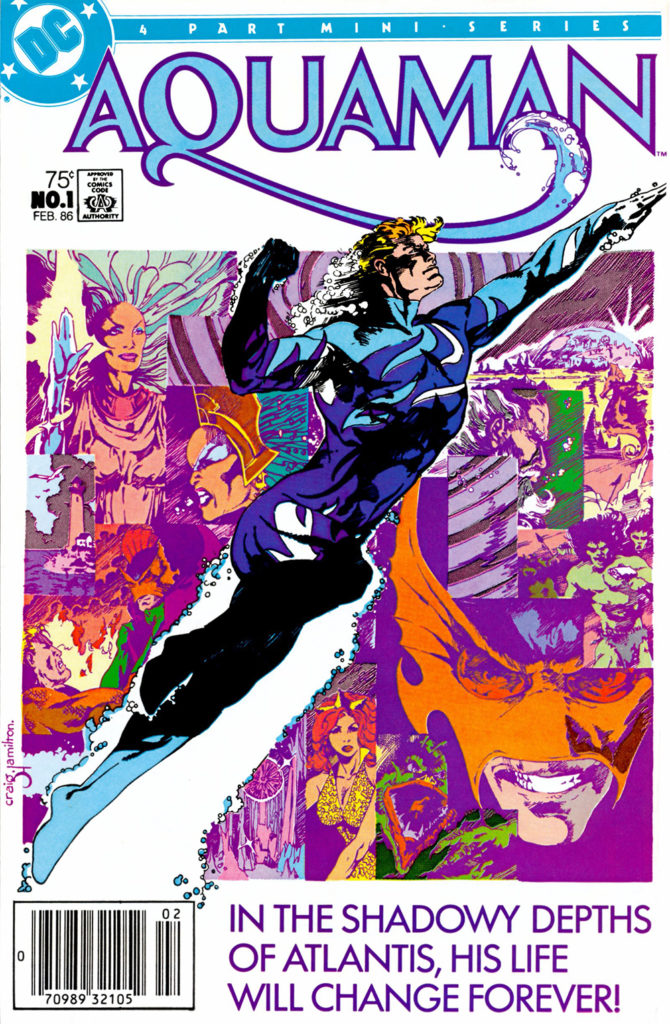 The follow-up mini would again have been penned by Pozner and illustrated by Hamilton, but it sadly never came to pass, reportedly due to the artist’s lateness in turning in his material.
The follow-up mini would again have been penned by Pozner and illustrated by Hamilton, but it sadly never came to pass, reportedly due to the artist’s lateness in turning in his material.
So what was Swamp Thing’s connection to Aquaman II? Well, the comic would have featured the return of Sunderland Corp., a corrupt mega-corporation led by General Avery/Carlton H. Sunderland (the comics have been inconsistent on his first name) and later his cousin Alan Windsor and daughter Constance “Connie” Sunderland. The company, which had ties to the military-industrial complex, the criminal underworld, and Matt Cable’s employer Defense Department Intelligence (D.D.I.), served as a foil to the plant elemental and his allies during the Marty Pasko, Alan Moore, Rick Veitch, and Nancy Collins runs on Saga of the Swamp Thing, with additional appearances in Firestorm the Nuclear Man, Hawkworld, Hawkman, and The Power Company.
Little is known about the intended storyline of Aquaman II. But thanks to comics historian Brian Cronin, some details have emerged online — and the Sunderland connection sounds like it would have been amusing. After 2,000 years of underwater isolation, Atlantis begins to interact with the surface world. Much technological trading takes place between the two cultures, courtesy of Sunderland. Pac-Man games, hula-hoops, disco clothing, and a fast-food restaurant all become popular in Atlantis, but not all Atlanteans view this as a positive step forward. Thus, Aquaman returns to the surface world to confront the corporation, which subjects him to a series of tests to determine just how formidable a foe he might be.
What would have happened next? And would Swamp Thing himself have put in an appearance to help halt Sunderland’s latest schemes? Alas, that remains a mystery, and Neal Pozner’s death in 1994 means we’ll likely never know.
Another Swamp Thing connection predates even Aquaman II. In 1980, DC published issue #28 of its monthly Super Friends comic, with a story by writer E. Nelson Bridwell and illustrators Ramona Fradon and Vince Colletta, titled “Masquerade of Madness.” Swamp Thing does not actually appear in this issue, but the character does have an unusual cameo… of sorts.
Wonder Twins Zan and Jayna attend a Halloween party at which Gotham City’s elite dress up as superheroes and supervillains, including Swamp Thing and Solomon Grundy. Batman and Robin are there, though no one realizes they’re the actual Caped Crusaders since they’re assumed to be partiers in costume. At midnight, evil sorcerer Felix Faust casts a spell, causing the guests to fall under his control so he can steal their priceless gems.
After Batman and Robin fail to stop Faust, Jayna flies away to seek help from Aquaman (the cartoon’s two-handed, short-haired, non-bearded version who spends his time talking to seahorses) and Wonder Woman, while photographer Jimmy Olsen summons his pal Superman. When the Super Friends arrive to save the day, Faust forces the revelers to attack them, somehow granting his entranced minions the strength and powers of the super-beings they resemble. Aquaman battles the fake Swamp Thing, who nearly crushes him to death.
Thankfully, Zan and Jimmy knock Faust unconscious, breaking his hold on those in the room. This begs the question of how the heck Jimmy Olsen and a guy whose power is turning into water could ever best a supervillain.
So there you have it. Swamp Thing and Aquaman briefly battled, then became allies, in the 1990s, after Aquaman had nearly fought one of Swamp Thing’s greatest foes in the 1980s and had grappled with a faux Swamp Thing as the 1970s came to a close. It’s certainly not as long or impressive a shared history as the elemental’s many interactions with Batman, Constantine, or Woodrue, but it represents a chapter in Swamp Thing’s—and Aquaman’s—past that should not be overlooked.
These days, in the era of New 52 and beyond, it’s commonplace to see Swamp Thing inhabiting the same pages as characters wearing colorful masks, capes, and skintight outfits emphasizing mammoth musculature and colossal cleavage.
Ever since Aquaman and four other dead heroes were resurrected in the Brightest Day maxiseries to defeat a corrupted Swamp Thing called the Dark Avatar, a team-up between the elemental and the Atlantean wouldn’t even cause today’s fans to bat an eye. But in the days when “Sea of Green” and “Vision Quest” were on store shelves, it was something new and wholly unexpected.
That’s quite a sea change.

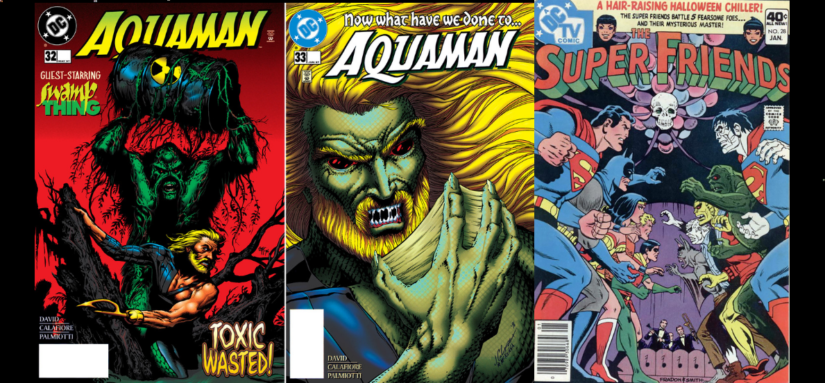
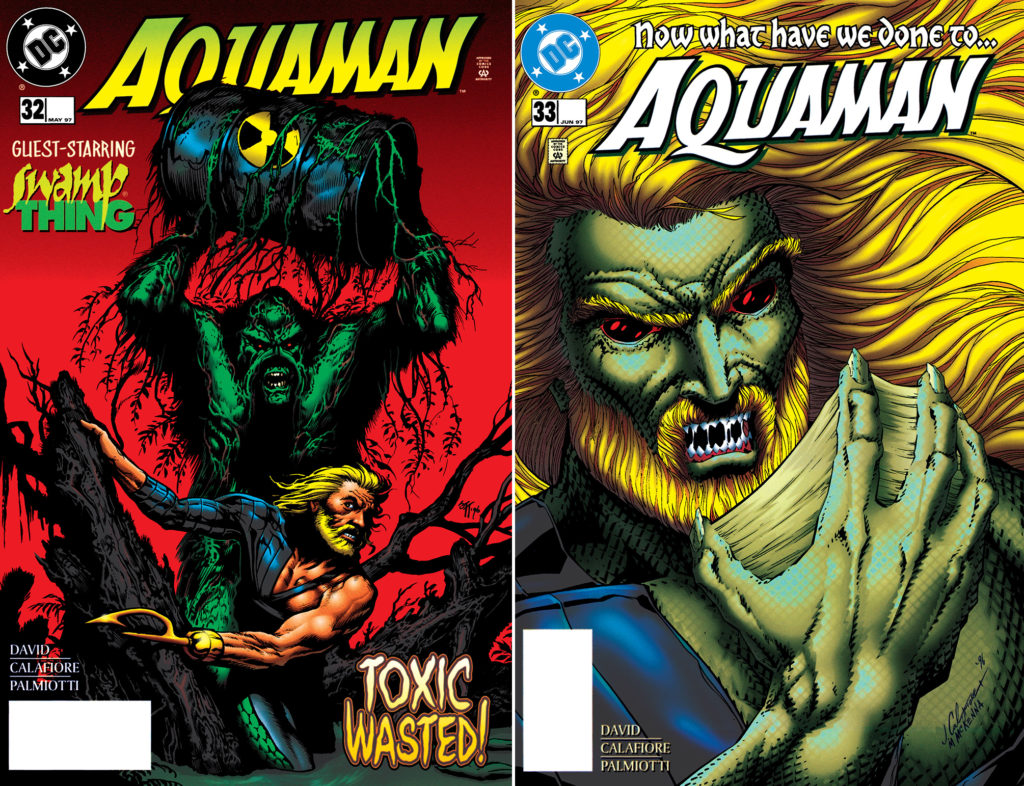
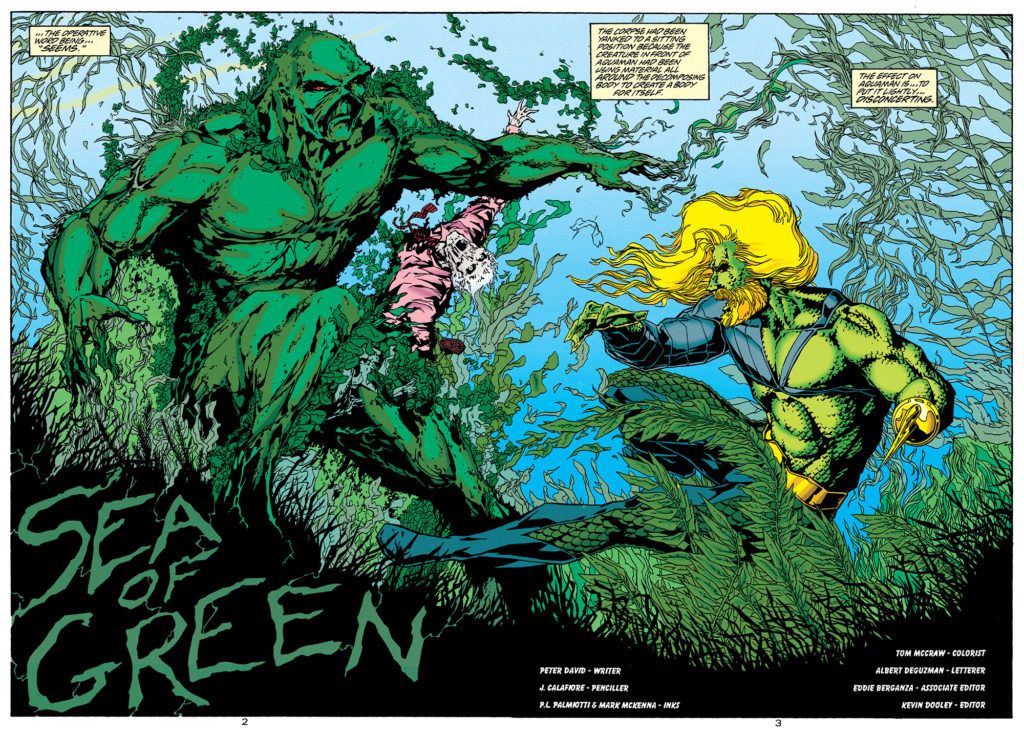
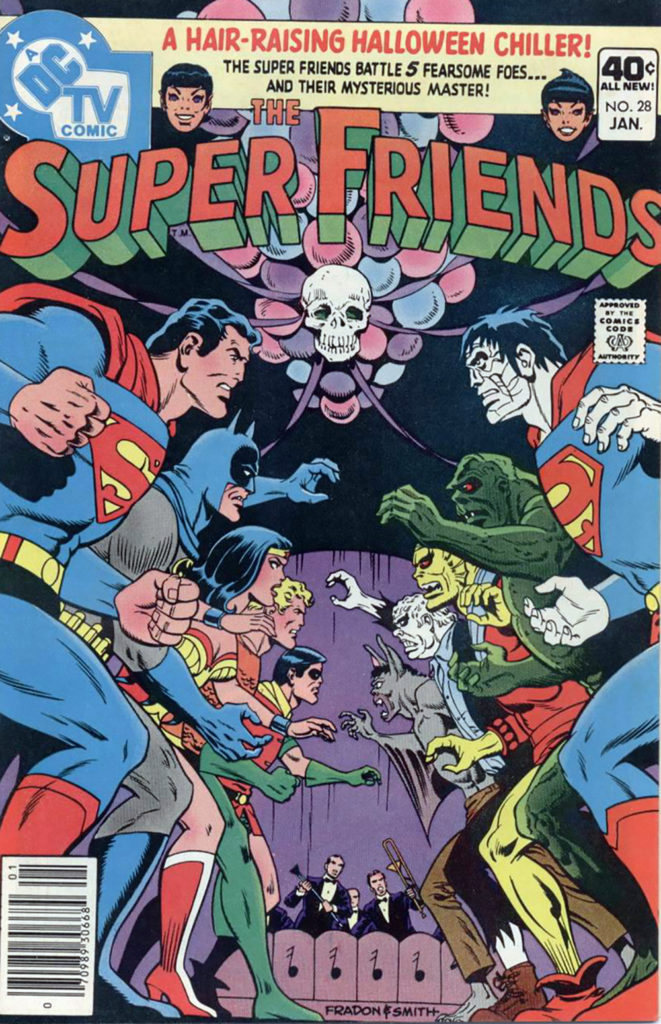
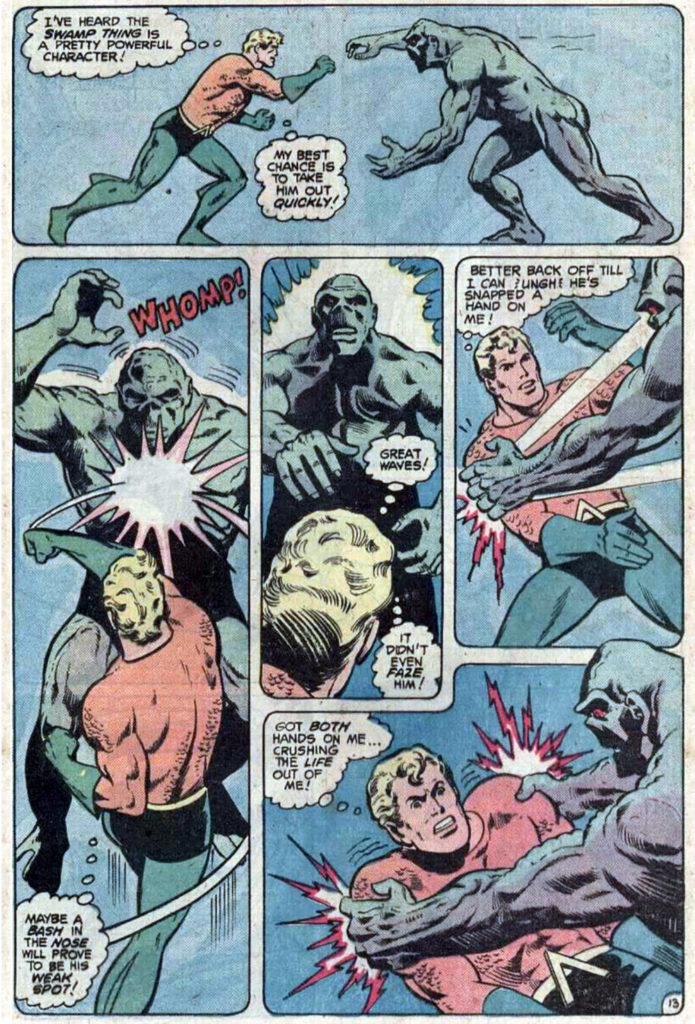
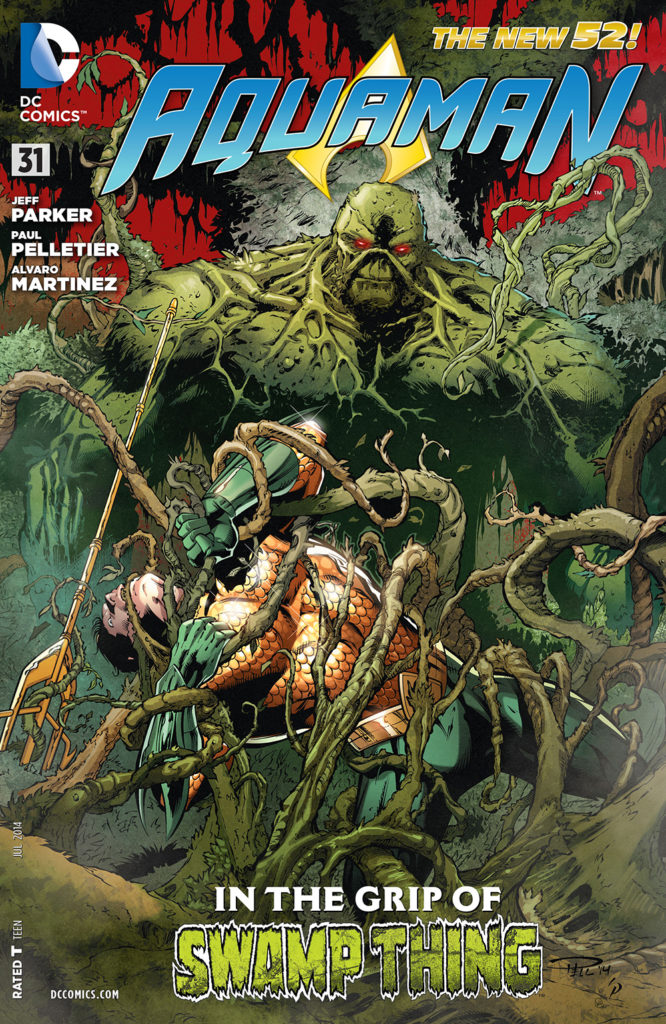
Comments are closed.